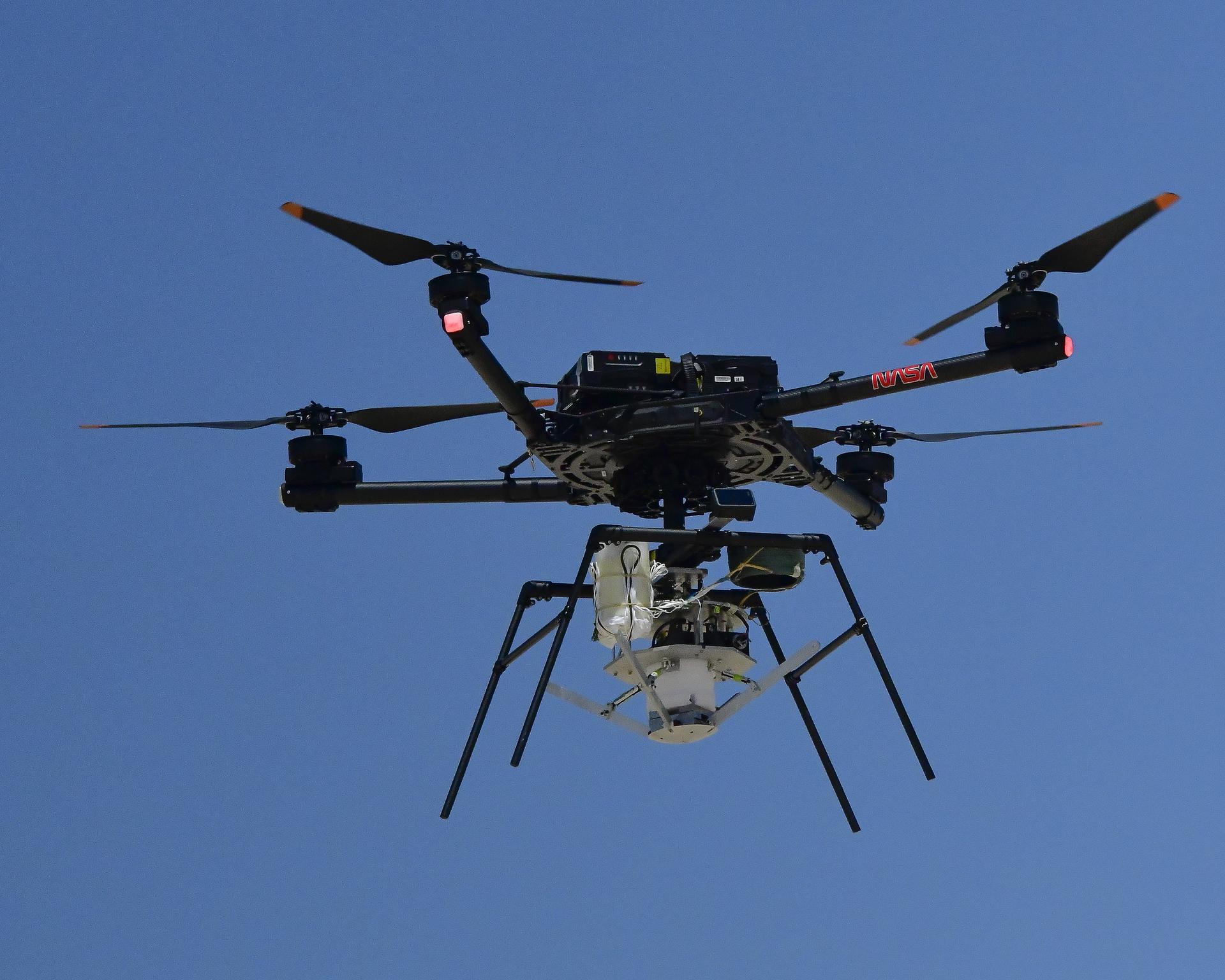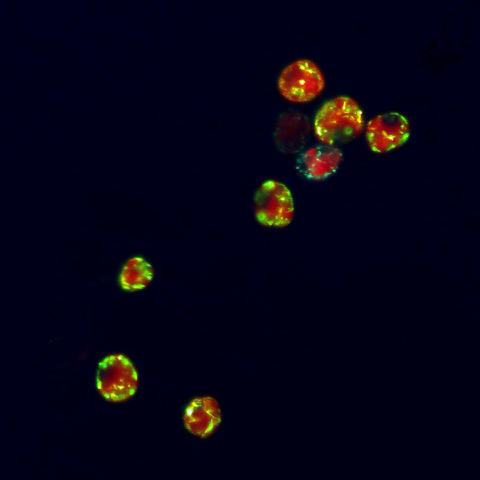PROTECT YOUR DNA WITH QUANTUM TECHNOLOGY
Orgo-Life the new way to the future Advertising by Adpathway¡Hola! Here at Chasmosaurs we observe a Golden Rule when traveling abroad: “any opportunity must be taken to visit a park exhibiting model dinosaurs in the woods, so long as it is within a reasonable traveling distance” (M. Vincent et al, 2025). My corollary to that rule would be: if model dinosaurs are unavailable, a natural history museum will surely do.

And so we find ourselves in Madrid, the sunny, colourful and vibrant capital of Spain, a perfect place to spend a nice long week off while it’s raining back home in the Netherlands. Our museum of interest is called the Museo Nacional de Ciencias Naturales, managed by the Consejo Superior de Investigaciones Científicas and located close to the Spanish houses of government. Interestingly, it shares the building it is housed in with an engineering school, and its collection is divided between two locations within the same building, so you have to walk around halfway into your visit. The first location (and the only one with a ticket desk) houses the modern nature museum, while the other one houses the palaeontological and geological collections.

The contemporary half of the museum is this airy, spacious hall filled with glass cabinets and showcases, taxidermy, shells, birds, skeletons, and, naturally, the obligatory dangling whale.

¿How to organize a parade of animals? ¿In a March of Progress, like the museum in Vienna? ¿A random heap of stuff, like the one at Naturalis in Leiden? The MNCN organizes its collection by theme and subject. It feels both very orderly and very modern. Here, for instance, the difference is explained between different kinds of horns, showing the heads of several bovids, cervids and the hornless skull of the rhinoceros. A display of koalas, cuscuses and komodo dragons explains the uniqueness of island fauna. There’s a large display devoted to the major biomes of the world and the fauna found therein. There’s a display explaining the differences in the digestive system between herbivores and carnivores. And so on. The level of education is consistently very high.

View on the biomes.

Museums these days are expected to be kid-friendly, so they must provide the guest with a certain amount of razzle-dazzle. Heaven forbid anyone should get bored. Call me a stick-in-the-mud, but I am of the opinion that a natural history museum is primarily there to educate its visitors, and the MNCN delivers. They have something to tell you, and they commit. I don’t think I ever saw so many display signs, full of walls of text, as here. You can spend hours here just reading. Everything is bilingual, too. Every aspect of the museum is completely on message: there’s biodiversity, it’s great, it is threatened, and everyone has the responsibility to conserve it.
It’s possibly preaching to the choir. If you are a regular reader of this blog you are unlikely to learn much you don’t already know, but it’s nice to get to a museum that is utterly unafraid to face the hard issues head-on. At a place like Naturalis, for all that it calls itself a “biodiversity center” (whatever that means), I often feel like it treads lightly around possibly volatile issues like biodiversity loss, climate change and even evolution. ¡No skirting around those issues here! Not everyone is going to want to engage with a museum in this way, but I find it very refreshing.

¿Wouldn’t it be chilly with no skin on? Actually that giraffe is on to something, Madrid gets pretty toasty in the summer. Behind, a parade of several species of zebra, explaining the complexity of their taxonomy. Told you they don’t shy away from the big issues here.

¡A companion sign by the whale skeletons and models of sharks explains convergent evolution! Great stuff.

Skeletons are towards the back. A greatly satisfying animal collection overall.

The view from the balcony.

The galleries on the upper floor of the hall are used as temporary exhibition space. Currently, the museum is showing entries from the Comedy Wildlife Awards. If you’re a biology nerd on the internet, like me, you’ve probably heard of this competition before (it goes semi-viral every year) and seeing its most hilarious entries on display at a museum like this is utterly delightful. This particular exhibition runs until September 14 2025.

We exit through the back door and somewhat awkwardly make our way around the building into the second entry, following the dinosaur footprints…

¡I feel at home already! The Allosaurus and the geode next to it basically tell us exactly what we’re in for.

The geology hall feels slightly more old-fashioned and less flashy. The corridors are narrower and there’s greater emphasis on glass displays full of fossils. That’s not a bad thing in itself. I take more exception to the fact that the signage is much less bilingual; most of the information is only in Spanish at this point. Lots of trilobites, ammonites, other invertebrates and fish to look at here, plus a mounted Eryops.

Ammonite dioramas. Some of the artwork on the walls is by Raúl Martín. I’m not sure if this is, too.

The far end of the geology hall is dedicated to dinosaur mounts. I believe there to be six full-size mounts, all but one of Jurassic Morrison dinosaurs. They are all casts. Of course, the Morrison dinosaurs also broadly work as stand-ins for their Jurassic brethren found on the Iberian peninsula… Stegosaurus is a big crowd-pleaser.

Camptosaurus is more of a rarity, a real treat to see. At this most eye-catching side of the museum, the signage is fortunately bilingual again.

Actual fossils are still not forgotten. Here is some actual Iberian sauropod material next to a (mostly unrelated) piece of Raúl Martín artwork.

Madrid also has one of the Carnegie Diplodocus casts. After the ones in London and Vienna, this is now the third I’ve seen.

The mascot of the entire museum is Torvosaurus. This is the Morrison version, but Torvosaurus is also famously found on the Iberian peninsula. Oddly, the cast has a different colour than all the other ones, including the Allosaurus by the entrance. It stands out all the more. An impressive animal, for sure. This particular cast still suffers from bunny hands syndrome. I also suspect its teeth are dangling a bit too far out of their sockets.

The odd one out among the mounted skeletons is Carnotaurus, the only Cretaceous dinosaur on display here. Compared to much more “normal” looking theropods like Allosaurus and Torvosaurus, it’s a real oddball. It’s got those long legs, that weird head and those stumpy arms. I don’t know if the way it’s mounted is completely in keeping with modern insight – those shoulder girdles look very high up – but it’s still a great animal to see.

The other dinosaur is Camarasaurus, a staple of dinosaur museums everywhere. It’s relatively common, it’s modestly sized as far as sauropods go but it still has that Jurassic giant flair. No wonder you see it everywhere. The only thing I found slightly disappointing about this particular dinosaur parade is that the options for observing the skeletons at different angles is limited – you can basically only see them side-on, and from the top floor. I fully understand that this is a space issue. Compare this set-up to that of the LWL Museum in Münster, for instance, That’s also not a massive building, but the skeletons are in the middle and you can walk all around them.

Though not dinosaurs, the MNCN has an impressive collection of Cenozoic mammals. Here’s some Deinotherium material, cleverly mounted against the silhouette of the full-sized animal to sell you how impressive it must have been.

The other great elephantine behemoth is Elephas antiquus (now Palaeoloxodon antiquus), brilliantly evoked using only its skull and legs. This guy would have been over twice the weight of an African bull elephant.

But the real prize possession of the MNCN is the holotype of Megatherium americanum, the original giant sloth, named on the basis of this very skeleton by Cuvier himself. This is the skeleton that was sent to Spain from Argentina in the 18th century. The sign duly notes that the mount is no longer considered scientifically accurate, but is preserved in this manner for historical purposes.

On the upper floor, space is made for the subject of human evolution, so lots of differently-shaped hominin skulls here. Also a good number of models, though they aren’t up to the Kennis & Kennis standard.

And then there’s minerals. So many minerals. All you mineral lovers out there, eat your crystalline heart out. A vast collection of shinies, and even some historic furniture incorporating said shinies. You could really spend a lot of time here just looking at the minerals.

¿Some words about the gift shop, perhaps? After Vienna, it takes a lot for gift shops to impress me anymore, and indeed the one in Madrid wasn’t up to that lofty standard. For those of you interested: the toy collection was mostly Sleich, and worse. The book collection was much better, although of interest especially if you are fluent in Spanish.
I can really recommend a visit to Madrid, especially if it gets tourists away from Barcelona. It’s a lovely town to spend a week and the food alone makes it worth it; you can enter any place at any street and you’re guaranteed a good meal. ¡The Museo Nacional de Ciencias Naturales is a great museum worthy of the city, well worth a visit if you happen to be there, and just another reason to love Spain! The Madrid metro system is very good and makes everything easy to get to. ¡Adios!























 English (US) ·
English (US) ·  French (CA) ·
French (CA) ·